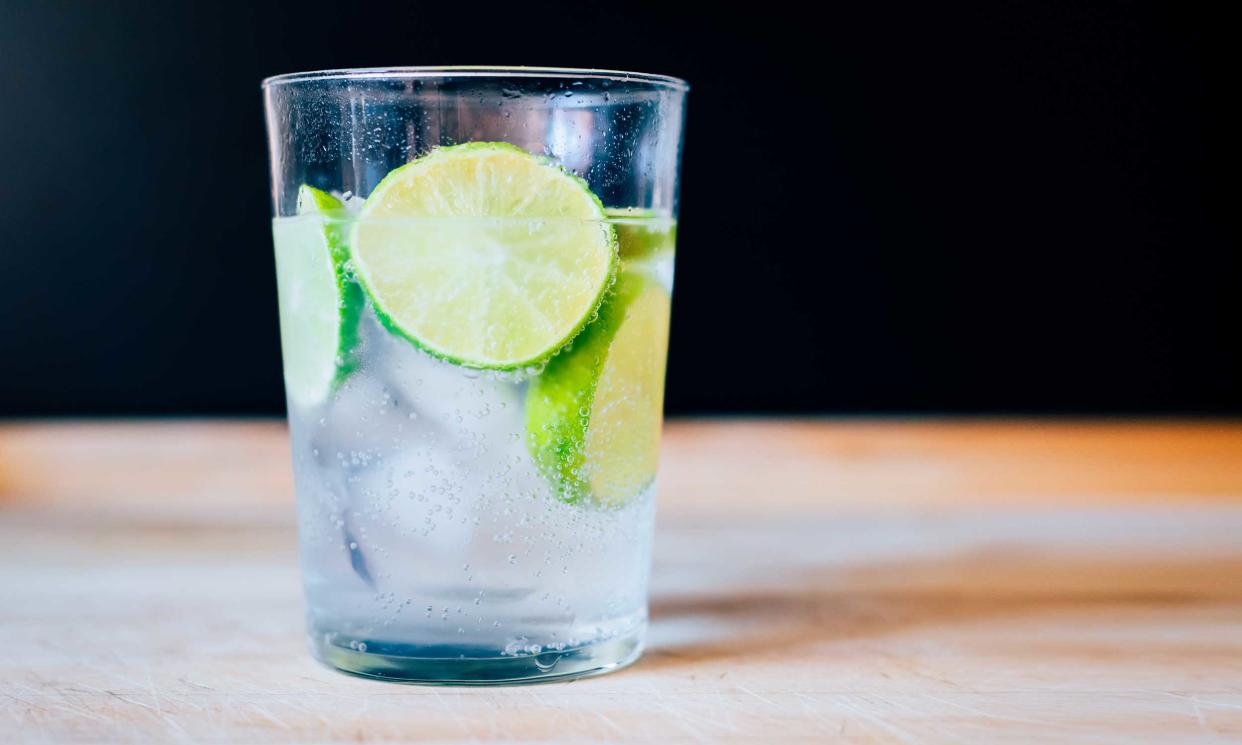What's Actually in Tonic Water?

If you've ever had a sip of straight tonic water, without gin or vodka or any other liquors, you know that tonic water is not seltzer, or even club soda. Sure, all three drinks look the same. They're all clear, carbonated drinks. But both seltzer and club soda have a fairly neutral taste, especially when compared to that of tonic water. So what are the ingredients of tonic water exactly, and what gives tonic water its distinctive taste?
The bitterness you taste when you drink tonic water comes from one ingredient: quinine. "Quinine is an alkaloid found in bark of a tree native to the Peruvian Andes," explains Jordan Silbert, CEO and founder of Q Drinks, a company that makes tonic water, among other artisanal mixers, in Brooklyn, NY. Quinine's original use was medicinal, to treat malaria, until "in 1825, British officers in the Indian Army decided to improve its bitter taste by mixing it with soda water, sugar and gin," says Silbert. And with that, "The original gin and tonic was thus born."
Silbert and his company source quinine from the bark of cinchona trees grown on the slopes of the Andes mountains in Peru, just as British soldiers did in the 19th century, and really, getting quinine from a natural source is still the most efficient way.
But even though it's natural, quinine is an ingredient that does still have medicinal uses, so its use in soft drinks, specifically tonic water, is regulated by the US Food and Drug Administration. According to the agency's guidelines, no soft drink is "to exceed 83 parts per million, as quinine," and the fact that there's quinine in the drink needs to be clearly stated on the label, "either by the use of the word 'quinine' in the name of the article or through a separate declaration."
The reason for this strict labeling is that some people are violently allergic to quinine, though it is fairly rare (and if you're allergic to quinine, you'll know pretty instantly). So even though tonic water is safe for most people to drink, don't expect a daily gin and tonic to cure malaria. The concentration of quinine in tonic water in the United States is far below that of a therapeutic dose. Quinine will also not help treat leg cramps, according to a press release from the US FDA, even though that was once a relatively common off-label use for this ingredient, as prescribed by doctors.
Quinine isn't the only ingredient in tonic water, however. There's the carbonated water, of course. You also need sugar to offset the bitterness of quinine. The folks at Q Drinks use agave nectar to add sweetness, but many other companies use sugar or straight-up corn syrup to add some sweetness. Schweppes, for instance, uses high fructose corn syrup in its tonic water, along with some preservatives.
This relatively high sugar content of tonic water is why you shouldn't turn this drink as an healthier alternative to soda. If you're trying to cut back on your sugar intake, grab a bottle of seltzer or a can of sparkling water instead, and leave the tonic water for a special occasion (like Tuesday at 5 p.m.).


